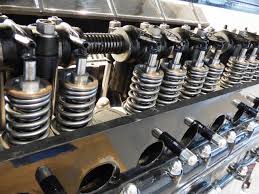In the world of automotive repairs and upgrades, the debate between using Original Equipment Manufacturer (OEM) parts and aftermarket parts is ongoing. As car owners seek the best options for their vehicles, understanding the key differences between these two types of parts is essential.
OEM Parts: The Manufacturer’s Choice
OEM parts are made by the vehicle’s original manufacturer. These parts are designed specifically for a particular model, ensuring a perfect fit and function. One of the primary advantages of OEM parts is their guaranteed quality and reliability, as they are essentially identical to the parts your car was built with.
A major benefit of OEM parts is the warranty and support often provided by the manufacturer. This warranty can be a significant factor for those who want assurance that the part will last. Moreover, since these parts are often available through authorized dealerships, finding the correct part is generally straightforward.
However, this convenience and quality come at a cost. OEM parts are typically more expensive than their aftermarket counterparts. This higher price point is often justified by the quality assurance and the peace of mind that comes with knowing the part is an exact replacement.
Aftermarket Parts: A World of Variety
Aftermarket parts are produced by companies other than the vehicle’s original manufacturer. These parts are designed to function similarly to OEM parts but are often available at a lower cost. The variety of aftermarket parts available in the market is vast, offering car owners numerous options in terms of price, quality, and performance.
The primary advantage of aftermarket parts is their affordability. They are often significantly cheaper than OEM parts, making them an attractive option for car owners on a budget. Additionally, for certain vehicles, especially older models, aftermarket parts might be the only available option as OEM parts may no longer be produced.
Another advantage is the range of performance and customization options available in the aftermarket sector. For those looking to enhance their vehicle’s performance or appearance, aftermarket parts can provide specialized features that OEM parts do not offer.
However, the quality of aftermarket parts can vary greatly. While many aftermarket manufacturers produce
parts of high quality, others may not meet the standards of OEM parts. This variability can be a concern for car owners who prioritize reliability and longevity. Additionally, aftermarket parts may not always have a warranty, and finding the perfect fit for your vehicle can sometimes be challenging, leading to additional labor costs in adjustments or modifications.
Making the Right Choice
The decision between OEM and aftermarket parts depends on several factors, including the type of repair, the age and model of the vehicle, and the owner’s budget and preferences. For routine maintenance and repairs, OEM parts are often the preferred choice due to their guaranteed fit and quality. However, for car enthusiasts or those looking to upgrade their vehicle, aftermarket parts offer a range of options and the potential for cost savings.
It’s important to research and consider the reputation of the manufacturer when choosing aftermarket parts. Established and reputable aftermarket manufacturers are more likely to produce parts that meet or exceed the quality of OEM parts.
For those concerned about the impact of using non-OEM parts on their vehicle’s warranty, it’s worth noting that, in many regions, the use of aftermarket parts does not automatically void a vehicle’s warranty. However, if an aftermarket part causes damage to the vehicle, the warranty may not cover the repairs.
The Future of Car Parts
The automotive industry is evolving with advancements in technology and the increasing popularity of electric and hybrid vehicles. This evolution is likely to impact the OEM and aftermarket parts industry, as new types of parts and repair techniques are developed.
In conclusion, both OEM and aftermarket car parts have their advantages and drawbacks. The choice between them should be based on careful consideration of the specific needs and circumstances of the vehicle and its owner. By understanding these differences, car owners can make informed decisions and maintain their vehicles effectively.
